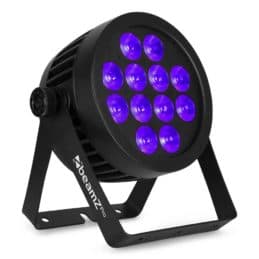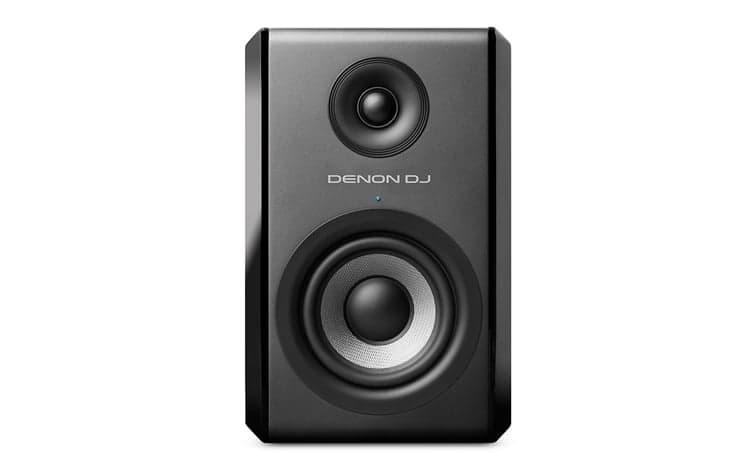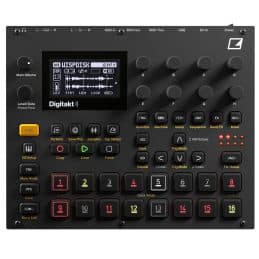
How To Make House Music: A Crash Course
The House Music Genre
What is the house music genre? In its simplest form, house music can be described as a form of electronic dance music (EDM), often with a regular and heavy beat.
According to some classifications, house music is also categorised by its typical 120-130 beats per minute tempo and a repeating four-on-the-floor beat.
There are further subgenres of house music, including progressive, deep house and future house music.

Subgenres of House Music
There are different types of house music, labelled as subgenres, that have developed over time.
It’s worth taking some time to familiarise yourself with the different subgenres so that when it comes to producing your own music, you have a clear idea of what you’re trying to create and can aim for that subgenre specifically.
Here is a list of the main (but not all) house music subgenres.
Melodic Deep House
This subgenre focuses on creating a melodic and heady/heavy sound through a synthesizer.
Deep House
Deep house is a slower variation of house music with beats per minute of around 120.
Chicago House
Originating from, you guessed it, Chicago, this subgenre developed in the 80s and includes simple basslines, synths, hi hats and four-to-the-floor percussion.
Acid House
As its name suggests, the acid house uses a hypnotic and repetitive style of music and often includes sounds and even spoken lines throughout.
Future House
The future house blends various deep and metallic hooks with heavy drops as well as general deep house music elements.
Tech House
Tech or techno house uses higher tempos of 120-130 beats per minute and focuses largely on the sub-bass, bass and kick drum.
Tropical House
Tropical (or trop) house focuses on saxophones, steel drums, marimbas and electro synths to create a lighter and more relaxed music style.
Progressive House
Progressive house music uses accelerated peaks and troughs and is known for layering different sounds.
Electro House
This subgenre uses pop and synthpop as well as simple melodies and regular beats. It is similar to another subgenre called Big Room House.
Bass House
Bass house brings a general tempo of 128 beats per minute and often plays with heavy distortion and draws from other subgenres.
Learning How to Make House Music

Before we dive into the making of house music, there are a few things that it’s important to note.
It Takes Time
Much like other DJ skills, such as scratching, making house music takes time. You won’t become a master overnight or even acquire the technical skills after reading a few online articles or watching a couple of tutorials.
We’ve aimed to give you a starting foundation and overview so that you’re best prepared to take your music-making skills to the next level and expand your skillset.
It Takes Practice
As well as time, you will need to practice. While that may seem obvious, it’s easier said than done. Practice means exactly that.
Set yourself up with some start house music software and begin to play around. The more you practice the deeper your understanding will be and the better you’ll get. Set aside regular times and keep yourself disciplined and committed and you’ll find yourself improving in leaps and bounds.
The Standard Elements of House Music
As mentioned above, there are two standard concepts in the making of house music.

Four-on-the-floor
A four-on-the-floor kick drum rhythm pattern means there are four consecutive quarter notes in a standard measure of 4/4 music. The use of the bass drum (the one on the floor) is what’s referenced in its rather tongue-twisty name.
The clap is on the 2nd and 4th notes. This kick-clap pattern is largely what contributes to making house music so good for dancing. It offers a very easy rhythm for people to move in time to, and the clap serves as a further anchor point.
Tempo
The standard tempo of most house music is 120 to 130 beats per minute (often shortened to BPM).
This tempo is also very conducive to dancing comfortably. When the BPM rises past 130, dancers are required to move significantly more quickly which takes more energy and exertion.
House Music: The Drums
Drums are an essential component in the creation of house music.
During the early development of the house music genre, drum machines had a particular style and sound thanks to the limited number of sounds available. Over time and with the explosion of drum samples now available to the modern music producer, the house music style is much more varied and as such creativity has become a lot more unbridled.
When you’re looking to produce music yourself, you’ll often start with the various drum machines: kick and clap, hats, percussion and groove.
SHOP: Drum Machines
Kick and Clap
The basic kick and clap rhythm form the foundation for many house music tracks. Adding a clap or even double clap on every 2nd and 4th kick creates a strong rhythm from which you can begin to build your track. Of course, you can be creative with it by doubling the kick drum as well if you’d like.
Many artists choose to vary their kick-clap formulations over either 4 or 8 or 16 bar phrases. This breaks up the pattern and creates a sense of uniqueness and freshness across the track.
Percussions
Using percussion allows you to add more style and personality to the rhythm of your house music track. Percussion can be used as loops or one-shots.
A percussion loop is a fixed set of sounds that repeat themselves in an ongoing cycle. A one-short, as its name alludes, is the opposite: a single drum or sound.
Hats
Hats can be used in house music in a variety of ways. Often, the offbeat hi-hat is commonly used to balance the rhythm of the track but there are other hats that can be utilised as well for a variety of sounds to mix the music up a bit.
Groove
Many DAWs will come with a groove setting as well that you can use to change the sound of the drum groove. It can be helpful to play around with this setting to change the overall feel of the track.
SHOP: Groove Machines
House Music: The Bass
House music, especially deep house bass, is fairly reliant on some level of incorporation of a deep bass sound.
Bassline
When you approach your bass-line, there are a number of rhythm options to consider:
- Syncopated rhythms (meaning rhythmic patterns on the strong beats)
- On-the-beat basslines
- Down the scale rhythms
- Offbeat rhythm emphasis
Frequency
The frequency range and groove of your chosen bassline will be largely reflective of your chosen house music genre.
Notes
As far as notes are concerned, the standard bassline works on a minor pentatonic scale. Pentatonic scale means that each octave has a five-note musical scale. Being a minor scale, you’d leave out notes number 2 and 6, leaving just the five notes.
House Music: Sound Design and Instruments
Sound Design
This is where the importance of the subgenre comes in. It’s important to have specified your chosen subgenre when you begin to approach the sound design of your track.
For example; deep house would require a darker filtered bass sound than a tropical house, where you want a lighter sound.
In addition to the standard drums and bass which are the meat and potatoes of creating house music, there are a number of other musical elements to consider and incorporate, including:
- Chords – this term refers to the harmonic set of notes that are heard at the same time.
- Melody – the melody is the collection of pitches or musical tones in any given rhythm.
- Effects – different sound effects, often written as simply FX can be used to mix up your track. These can include sweeps, crashes, and down lifters, or creative FX like vinyl crackling, white noise, or even spoken lyrics).
House Music: The Arrangement
The arrangement of a house music track is essential for capturing the flavour of the genre. The arrangement of your music keeps it interesting, creative and creates a vibe.
In terms of the structure, house music can range in length from 3 minutes to 10 minutes, though there are no hard and fast rules and this can vary from subgenre to subgenre. Some DJs opt to include an intro or outro for tracks that are particularly long to keep the pace and energy up.
Further arrangement includes the layering of the different instrumentation and incorporation of the other elements we outlined above, like chords, musical effects, and vocals. Moreover, you can range your track over time in terms of volume, filter, reverb and delay.
This all bleeds into the final stage of making house music: mixing and mastering.
Volume
Part of mixing your track is ensuring that the volume of the different elements is balanced as well as the importance of the volume of the individual track itself.
Equalisation
Equalisation or EQ helps you clean up your music during production by finding the right cutoff frequency without thinning out the track or making it muddied.
Compression
Use compression to help even out the overall audio quality and prepare the track for the mastering stage. (For certain subgenres, sidechain compression is also important.)
Mastering
Mastering is the stage in your music’s post-production where you prepare the audio for transferring from one source into another device and ensuring that it can then be copied.
There are a few pieces of software, devices, online plugins and techniques that can be used depending on your chosen subgenre and the track itself.
- Buss compression – this helps to create cohesion amongst your disparate tracks especially if you opt for an analogue-type compressor.
- Multiband compression – this can be a super effective tool for high energy tracks but should be used carefully.
- Limiting – this allows you to ensure your track is as loud as possible without causing any distortion or clipping of the audio.
The Best Way To Learn How To Make House Music Is To Make It!
There you have an introductory crash course into how to make house music. While we’ve touched on many of the crucial elements of the genre (and subgenres) of house music, the best way to improve your skills and develop a deep and comprehensive understanding is by playing around and practising yourself!
























